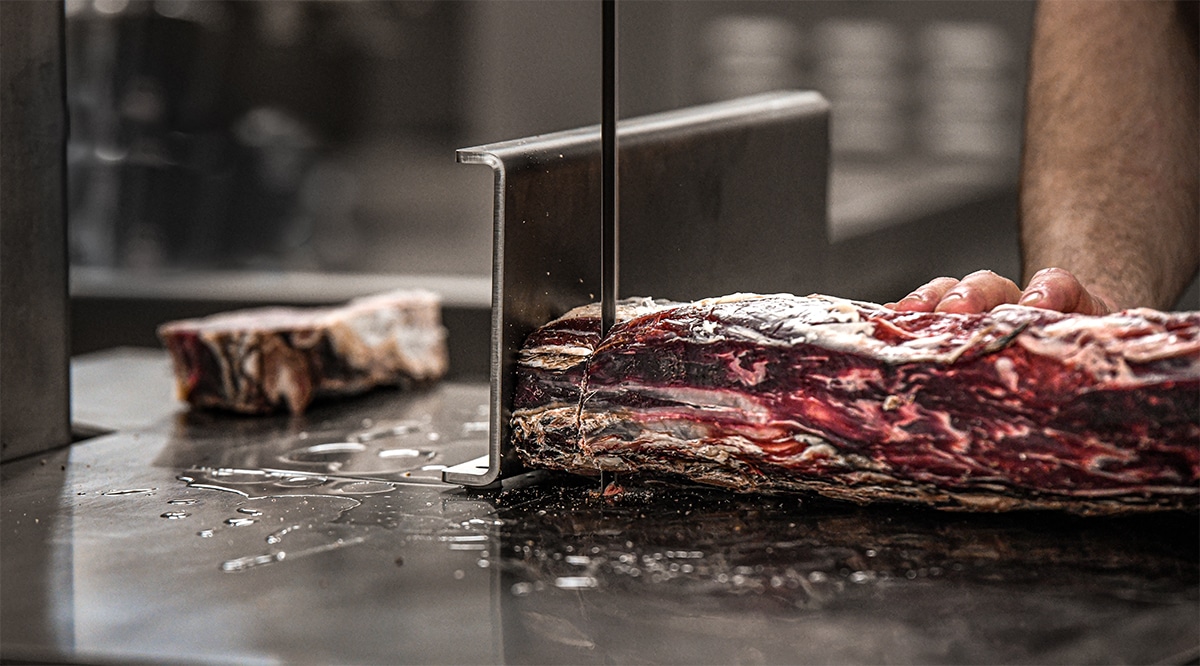
Playing high steaks or selling high steaks?
Time to diversify in the butcher shop
It’s 2020; steaks are still tender, but retailing meat has become ‘extremely tough’….
Owning your very own butcher shop, training your own apprentices, and knowing Mrs Jones by name, greeting her every time she walks in to buy the mince for tea tonight can be so rewarding. Even when she asks for a steak to be vacuum packed in view of next week’s dinner, you feel so good doing it – your contribution to the local community is really being appreciated out there.
But meeting with the accountant at the end of a quarter, or end of financial year, never seems to yield the same special buzz. There’s no sense of excitement in being told that while you are selling more meat this year, your profits are actually down a little. Oh and there’s less meat available too now, meaning securing raw product is getting harder, and there’s a new supermarket opening up across the street next month…
Steaks
It’s probably the one time in the year that the butcher looks at his business objectively, and wonders when the golden days will come back. Be assured, meat retailing has evolved and today’s success stories are not from products like the traditional beef mince, Aussie thin sausages and rump steaks.
Risking your business viability on the same old methods can be akin to playing high stakes at the casino – in the end you will always lose.
Today, butcher shop success comes only to those who diversify.
One owner of a prominent butcher shop chain in Melbourne exclaimed at the end of 2015 that his customer count was up; his basket count was up; his prices per kg were up; but profits at the end of the year were still down due to the tight margins on beef!
Meanwhile there’s another progressive butcher with 3 stores, and still growing, advising that every time wholesale beef prices increased, he raised his selling prices without hesitation.
“My customers don’t come here expecting the same old products for the same old prices”, he explained. “I’ve put in a 200 kg dry-aged beef cabinet, and my customers can’t get enough of it. When a batch of beef has finished aging, we pack it onto the self-serve display cabinet in the bone-in VikingMAX bags; within hours it’s all gone.”
Diversifying into dry aged beef has been an obvious winner – the high quality steaks are selling for $50-80 per kg. And the beef isn’t costing him any extra to buy on the wholesale market. It took some out of the box thinking, to invest in a dry-aging cabinet, but “it’s the best decision I’ve made”! And he’s is not the only one to be proud of diversifying.
What about selling hot steak & bacon pies, directly from the butcher shop?
When a customer comes to the butcher shop with purchasing in mind, they are expecting something better than the large generic supermarkets, and what better opportunity than to show that you are truly gourmet?
A new range of combi ovens supplied from Viking Food Solutions is proving exactly that in the new generation butcher shops, where the butcher shop now provides a gourmet experience. From the mouth of an industry insider, “if a consumer is bothering to go to a butcher shop rather than a supermarket to get their meat, they’re coming to experience something different”.
And if that shop is using a Unox combi oven, the options are endless: roast chickens, hot pastries, pulled pork, sous vide steaks, seared salmon, even breads, are all possible.
When a well renowned butcher installed his first Unox combi oven from Viking, excitement was high, and it was not just something novel; he’s now selling pre-cooked bags of shredded meat at multiple times the profit margins previously achieved. And there’s no stopping there: “with that one fact alone, I’ve paid off my oven” says Peter. Yet he’s only starting, with an entire cooked menu ahead.
It’s called diversifying, but it doesn’t have to cost money, and it doesn’t have to be difficult. It definitely requires thinking ‘outside the box’ and knowing what your customer base is. With an inner city shop in Sydney, a café style cooked lunch menu is an obvious winner. The customers then come back again at the end of the day to buy the fresh meat.
For the holiday area butcher shop, diversifying might simply mean adding seafood. And for Dennis of Bexley, a true English butcher shop in the suburbs of London, an extensive range of hot meat pies is creating queues of people lining up just to get inside.
The old butcher shop business model is rapidly going the way of the corner store milk bars, and there’s no point hanging onto old thinking. But with out-of-the-box thinking, and a readiness to adapt to the customer base, many new age butcher shops are making a massive come back.
Diversity in the butcher shop is a global phenomenon, and it’s sweeping through near you.
Equipping the food industry to grow with food processing and packaging solutions
call 1300 88 99 51
email [email protected]
room 35 Shirley Way, Epping VIC 3076
room 9 Mcilwraith St, Wetherill Park NSW 2164
room 21 Hoyle Rd, Hope Valley WA 6165
room 27 Beal Street, Meadowbrook QLD 4131
room 7 Chadderton Bvd, Epping VIC 3076
room 22 Glassford Rd, Kewdale WA 6105
room 25 Hayton Road, Wigram, Christchurch 8042, NZ
Connect with us on LinkedIn
